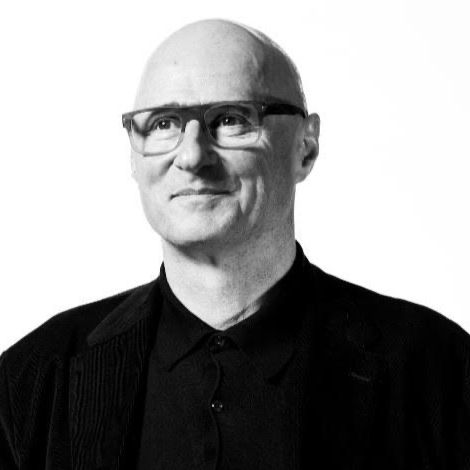Resha Patil

Profession: Architect, Urban Designer
City: Sonipat
Country: India
What inspired you to want a life in Architecture and the creative industries?:
My journey into the world of architecture and the creative industries is deeply rooted in a childhood filled with a passion for creativity and a keen eye for detail. From a young age, I found myself drawn to the interplay of colors, textures, and forms, whether it was through preparing greetings with dried leaves or meticulously hand-drawn sketches adorned with vibrant hues.
I distinctly remember my fascination with choosing different colors and textures while selecting clothes, and this inclination towards visual aesthetics extended to my schoolwork as well. For drawing submissions, I always sought out unique textured papers to add depth and dimension to my paintings, demonstrating my commitment to exploring diverse artistic mediums.
These early experiences not only nurtured my love for creativity but also instilled in me a profound appreciation for the transformative power of design. Whether it was experimenting with textures or meticulously selecting colors, I found joy in the process of bringing ideas to life through artistic expression. As I grew older, my father recognized my innate talent and encouraged me to pursue architecture as a career path. His vision for me as an architect resonated deeply, as it aligned perfectly with my own aspirations to create meaningful spaces that inspire and enrich lives. With his guidance and support, I embarked on a journey to turn my passion for creativity into a profession.
Beyond the allure of aesthetics, I’m deeply inspired by the profound impact that architecture can have on individuals and communities alike. It’s not just about designing buildings; it’s about shaping environments that foster connection, innovation, and well-being. The prospect of contributing to the fabric of society through thoughtful design excites me immensely and propels me forward in my pursuit of excellence in architecture and the creative industries.
In essence, my journey into architecture and the creative industries is a testament to my lifelong passion for creativity, my keen eye for detail, and the unwavering support of my family. It’s a journey fueled by curiosity, creativity, and a relentless drive to make a positive impact through design.
Who inspired you in finding your path to Architecture/Film and the creative industries?:
My journey into architecture and the creative industries has been profoundly shaped by the mentorship and experiences gained from working alongside legendary architects Mr. Jasbir Sachdev and Mrs. Rosemary Sachdev at Sachdev Eggleston Associates, New Delhi. There, I laid the foundation of my career through hands-on practical work, learning the intricacies of design and the importance of attention to detail. Inspired by their guidance, I embarked on a journey of exploration and study, delving into the works and styles of architectural luminaries such as Charles Correa, Frank Lloyd Wright, Richard Meier, and Zaha Hadid. Each of these architects brought forth unique perspectives and philosophies, which I assimilated into my own approach to design.
My professional journey also led me to collaborate with renowned firms and architects, further enriching my knowledge and skills. At Apollo Hospitals, where Smith Group served as consultant architects, I gained valuable insights into the complexities of large-scale projects and the importance of functional design.
Working closely with Architect Ramesh Khosla, principal architect of Arcop, proved to be a pivotal experience in my career. His diverse styles and innovative approaches broadened my horizons, inspiring me to explore new avenues of creativity and expression. From him, I learned the importance of embracing versatility and adapting to different design challenges.
In my pursuit of sustainable practices, I drew inspiration from visionaries such as Laurie Baker, Hasan Fathy, Ashok Lall, and Revathi Kamath. Their commitment to environmentally conscious design principles resonated deeply with me, influencing my approach towards creating spaces that are both aesthetically pleasing and environmentally responsible.
In essence, my journey into architecture and the creative industries has been a culmination of diverse influences, experiences, and mentors who have shaped my perspective and fueled my passion for innovative design. From the foundational teachings of Mr. Jasbir Sachdev and Mrs. Rosemary Sachdev to the diverse influences of renowned architects and sustainability advocates, each has played a significant role in shaping my path and contributing to my growth as a creative professional.
How you unlock obstacles and overcome bias in your work?:
In navigating the complexities of architectural design, my journey has been marked by a transformative shift from a place of bias and closed-mindedness to one of openness and inclusivity. As a learner in the early days of my career, I found myself unwittingly influenced by biases rooted in my religion and culture, approaching design with closed views. However, through the practice of architecture, I underwent a profound personal evolution that fundamentally changed my perspective on life.
Architecture became my gateway to a broader understanding of humanity, prompting me to shed biases and embrace a more neutral and inclusive approach to design. I made a conscious decision to open myself to diverse ideas, cultures, and perspectives, recognizing the richness and depth they bring to the creative process. It was through this openness that I began to appreciate and enjoy the diversity of cultures, foods, and traditions that surrounded me.
Today, as an architect and educator, I am committed to imparting these invaluable lessons to my students. I emphasize the importance of transcending biases and being receptive to others’ ideas, cultures, and experiences. I instill in them the belief that architects should be advocates for inclusivity, embracing diversity in all its forms—whether it be race, religion, gender, or beyond.
For me, architecture is more than just a profession; it is a reflection of my belief in the inherent dignity and worth of all individuals. I have come to see architecture and humanity as inseparable, with each informing and enriching the other. Therefore, I teach my students that architecture is not just about creating buildings; it is about fostering connections, understanding, and respect for the diverse tapestry of humanity that surrounds us.
In essence, my journey in architecture has taught me that openness, inclusivity, and respect for others are not only essential principles of good design but also fundamental tenets of being a responsible and empathetic human being.
What improvements do you feel are required to promote effective change in the academic and working environment?:
In the realm of architecture, promoting effective change in both academic institutions and professional environments necessitates a multifaceted approach that addresses practical realities and fosters meaningful collaborations. One key aspect is ensuring that academic programs are closely aligned with industry needs, not just in name but in genuine collaboration with industry experts. This entails forging international partnerships to facilitate knowledge exchange, practical training, and exposure to global best practices.
In countries like India, where funding and its appropriate utilization pose significant challenges, international tie-ups become imperative. Establishing collaborations for workshops, guest lectures, and hands-on experiences can provide students with invaluable real-world insights and practical skills. As someone who has experienced the struggle of navigating bureaucratic hurdles to meet the requirements of architecture courses, I recognize the importance of advocating for curriculum enhancements that prioritize practical learning and creative freedom.
Creating a conducive environment for creativity and exploration is paramount. While regulatory bodies may emphasize certain standards during inspections, the reality on the ground often falls short of providing students with the necessary resources and opportunities for hands-on learning. As the head of an institute, I have endeavored to bridge this gap by fostering a creative ambience and facilitating experiential learning opportunities for students.
At the heart of promoting effective change is a commitment to quality education and excellence in teaching. This requires not only attracting top-tier faculty but also empowering them to innovate and inspire students. By investing in the professional development of faculty members and providing them with the resources they need to excel, academic institutions can elevate the standard of education and nurture the next generation of architects.
In summary, promoting effective change in the academic and working environment of architecture requires collaborative efforts, innovative approaches, and a steadfast commitment to excellence. By prioritizing practical orientation, international collaborations, and quality education, we can empower students to thrive in a rapidly evolving profession and drive positive change in the built environment.














